Silly Symphony is an American animated series of 75 musical short films produced by Walt Disney Productions from 1929 to 1939. As the series name implies, the Silly Symphonies were originally intended as whimsical accompaniments to pieces of music. As such, the films usually did not feature continuing characters, unlike the Mickey Mouse shorts produced by Disney at the same time. The series is notable for its innovation with Technicolor and the multiplane motion picture camera, as well as its introduction of the character Donald Duck making his first appearance in the Silly Symphony cartoon The Wise Little Hen in 1934. Seven shorts won the Academy Award for Best Animated Short Film.
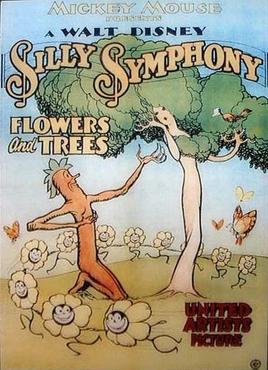
Flowers and Trees is a Silly Symphonies cartoon produced by Walt Disney, directed by Burt Gillett, and released to theatres by United Artists on July 30, 1932. It was the first commercially released film to be produced in the full-color three-strip Technicolor process after several years of two-color Technicolor films. The film was a commercial and critical success, winning the first Academy Award for Best Cartoon Short Subject.
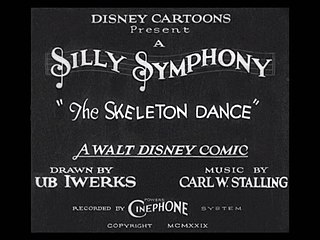
The Skeleton Dance is a 1929 Silly Symphony animated short subject produced and directed by Walt Disney and animated by Ub Iwerks. In the film, four human skeletons dance and make music around a spooky graveyard—a modern film example of medieval European "danse macabre" imagery. It is the first entry in the Silly Symphony series. In 1993, to coincide with the opening of Mickey's Toontown in Disneyland, a shortened cover of the cartoon's music was arranged to be featured in the land's background ambiance. The short's copyright was renewed in 1957, and as a published work from 1929 it will enter the US public domain on January 1, 2025.
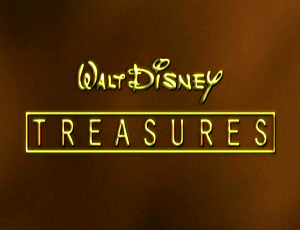
Walt Disney Treasures is a series of two-disc DVD collections of Disney cartoons, television episodes and other material. They cover material from the studio's earliest days to its more recent work. There were nine waves, each containing two to four sets, for a total of 30 titles. All content is presented uncensored and uncut with digitally restored picture and remastered sound.

Three Little Pigs is a 1933 animated short film released by United Artists, produced by Walt Disney and directed by Burt Gillett. Based on the fable of the same name, the Silly Symphony won the 1934 Academy Award for Best Animated Short Film. The short cost $22,000 and grossed $250,000.
Music Land is a Silly Symphony animated Disney short released in 1935.
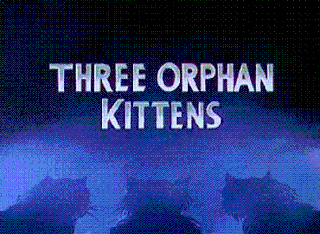
Three Orphan Kittens is a 1935 animated short film in the Silly Symphonies series produced by Walt Disney Productions. It was the winner of the 1935 Oscar for Academy Award for Best Short Subject (Cartoons). It was followed in 1936 by a sequel, More Kittens.
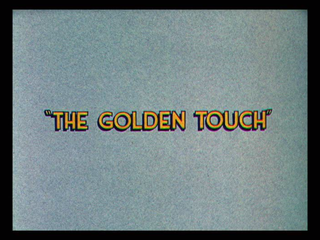
The Golden Touch is a Walt Disney Silly Symphony cartoon made in 1935. The story is based on the Greek myth of King Midas, albeit updated into a Medieval setting. It was the last film directed by Disney.
The Grasshopper and the Ants is a 1934 American animated short film produced by Walt Disney Productions and released by United Artists. Part of the Silly Symphonies series, the film is an adaptation of The Ant and the Grasshopper, one of Aesop's Fables. It was directed by Wilfred Jackson and stars Pinto Colvig as the voice of the grasshopper Hop.
The Flying Mouse is a Silly Symphonies cartoon produced by Walt Disney, directed by David Hand, and released to theatres by United Artists on July 14, 1934. The use of color here was rather innovative as it is set during the course of a single day.

The Robber Kitten is a 1935 Walt Disney Silly Symphonies cartoon, directed by David Hand.
Birds of a Feather is a Silly Symphonies animated Disney short film. It was released on February 10, 1931, by Columbia Pictures.
Mother Goose Melodies is a 1931 Silly Symphonies animated film, directed by Burt Gillett. Two years later it was semi remade in Technicolor as Old King Cole.
The China Plate is a 1931 Silly Symphonies animated film.
The Busy Beavers is a 1931 Silly Symphonies animated film, directed by Burt Gillett.

Father Noah's Ark is a Walt Disney Silly Symphonies animated film. It is based on the story of Noah's Ark. The short's musical score is an adaptation of the first dance in Ludwig van Beethoven's 12 Contredanses. The cartoon was released on April 8, 1933.
Funny Little Bunnies is a Silly Symphonies animated Disney short film. It was released in 1934.
Peculiar Penguins is a Silly Symphonies animated Disney short film. It was released in 1934. The song played during the cartoon is called "The Penguin Is a Very Funny Creature", by Leigh Harline.
Merbabies is a Silly Symphonies animated Disney short film. It was released on December 9, 1938. It is a collaboration between Walt Disney and Harman and Ising, the latter studio having donated artists to Disney to work on the production of Snow White and the Seven Dwarfs (1937). It is one of the last shorts of the Silly Symphonies series.

Farmyard Symphony is a 1938 Silly Symphonies animated short film. It can be seen as a precursor to Fantasia due to using various pieces of classical music in one short. The film was directed by Jack Cutting and produced by Walt Disney.









